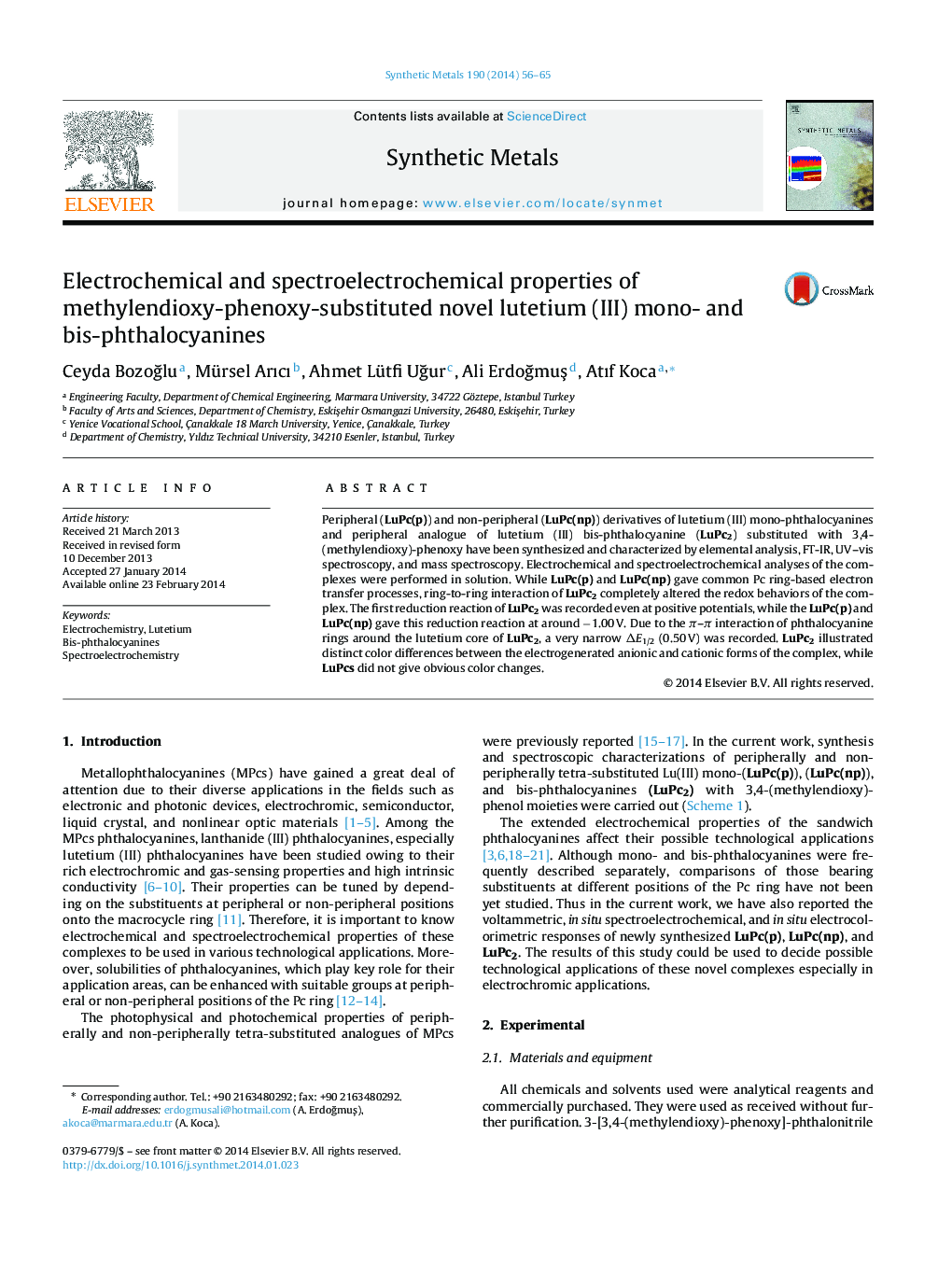| Article ID | Journal | Published Year | Pages | File Type |
|---|---|---|---|---|
| 1441022 | Synthetic Metals | 2014 | 10 Pages |
•Synthesis of lutetium mono- and bis-phthalocyanines.•Voltammetric and in situ spectroelectrochemical analysis were performed.•Lutetium mono-phthalocyanines give common Pc ring-based electron transfer processes.•Ring-to-ring interaction of LuPc2 alters the redox behaviors of the complex.
Peripheral (LuPc(p)) and non-peripheral (LuPc(np)) derivatives of lutetium (III) mono-phthalocyanines and peripheral analogue of lutetium (III) bis-phthalocyanine (LuPc2) substituted with 3,4-(methylendioxy)-phenoxy have been synthesized and characterized by elemental analysis, FT-IR, UV–vis spectroscopy, and mass spectroscopy. Electrochemical and spectroelectrochemical analyses of the complexes were performed in solution. While LuPc(p) and LuPc(np) gave common Pc ring-based electron transfer processes, ring-to-ring interaction of LuPc2 completely altered the redox behaviors of the complex. The first reduction reaction of LuPc2 was recorded even at positive potentials, while the LuPc(p) and LuPc(np) gave this reduction reaction at around −1.00 V. Due to the π–π interaction of phthalocyanine rings around the lutetium core of LuPc2, a very narrow ΔE1/2 (0.50 V) was recorded. LuPc2 illustrated distinct color differences between the electrogenerated anionic and cationic forms of the complex, while LuPcs did not give obvious color changes.
